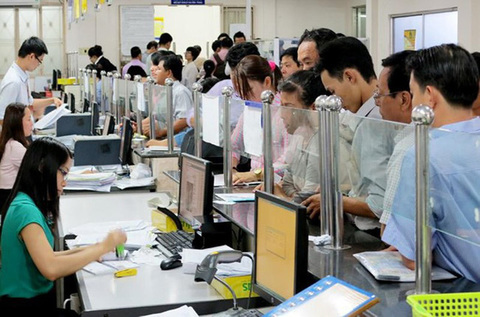GDP revision threatens to send debts spiraling, warn experts
GDP revision threatens to send debts spiraling, warn experts
The upward revision in Vietnam’s GDP will raise spending and borrowing ceilings while revenue sources remain unchanged, experts warn.
Vietnam’s economy was enlarged by 25.4 percent for the 2010–17 period, after the General Statistics Office revised its GDP measurement method.
The GDP increased to $275 billion from $220 billion by late 2017 as previously estimated. And after incorporating 2018 and first-half 2019 numbers, the GDP is now estimated to surpass $300 billion, while per capita income is around $3,000.
Dr Pham The Anh, chief economist at the Vietnam Institute for Economic and Policy Research, told VnExpress: "An increase in the denominator means public debt falls from 58.4 percent of GDP to below 50 percent, external debt to GDP falls below 40 percent, and public spending to GDP will fall to 23 or 24 percent compared the current 30 percent.
"These adjustments do not change the present or the nature of the economy, it is the impact going forward that concerns me. If spending and debt increase but [their use is] ineffective, the burden on the economy will be huge."
Dr Can Van Luc, another economist, said the GDP revision needs to be accompanied by appropriate adjustments to its GDP-based ceilings and limits.
If metrics such as the government’s current 3.6 percent current account deficit to GDP ceiling remain unchanged, the 25.4 percent increase in GDP would lead to spending and debt rising too quickly, he warned.
This risks creating an imbalance in the economy since revenues remain unchanged by the GDP revision, he added.
Anh said the big adjustment has to be made because the GSO had missed around 76,000 companies in past calculations. "These businesses were registered, operating legally and paying taxes, but adding them to GDP calculations now makes no difference to Vietnam’s revenues."
Nguyen Bich Lam, head of the GSO, admitted: "Whether or not public debt increases is the policy of the government, ministries and economists, while statistics are only responsible for providing a correct picture of the economy."
Re-evaluation of GDP is a regular task for national statistics agencies worldwide, he said.
The GSO had previously done a revision in 2013, which increased GDP by 9 percent over the previous five years.
Vietnam is one of Southeast Asia’s fastest growing economies, with growth averaging 6.55 percent in the last five years, fueled by robust exports and foreign investment.
According to the GSO’s previous calculations, the GDP grew at 7.08 percent last year, the highest in a decade.
The government targets annual GDP growth of 6.5-7 percent in the five years leading up to 2020.





















